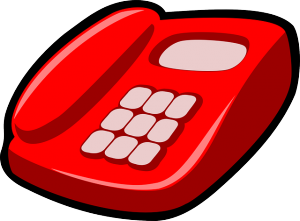 VoIP or Voice over Internet Protocol has now penetrated the health care sector and is proving to be immensely helpful in improving patient management and the clinical process. The recent drop in the costs of Voice over Internet Protocol has been welcomed by the health care sector and they are using the latest technology to streamline their UC systems and at the same time enhance the integration of patient and clinical registration along with billing systems.
VoIP or Voice over Internet Protocol has now penetrated the health care sector and is proving to be immensely helpful in improving patient management and the clinical process. The recent drop in the costs of Voice over Internet Protocol has been welcomed by the health care sector and they are using the latest technology to streamline their UC systems and at the same time enhance the integration of patient and clinical registration along with billing systems.
Majority of the health care facilities are updating their IT infrastructure in order to support their interoperability, EHR (Electronic Health Record) systems and standardization. Thus they are all contemplating to replace their old telephone systems and switch to the latest VoIP telephony. However prior to making any purchase, IT departments of the health care facilities are trying to justify their expenditure by finding out the exact ROI.
VoIP Tuned for The health Sector
Over the last few years there have been numerous developments in the products being offered by VoIP service providers. Just because of these developments there are many VoIP products that can be seamlessly integrated with various business applications. Companies are no more interested in spending money on phones and desktops and are instead switching to the latest softphones which have inbuilt applications. The total cost of ownership has also decreased and there are several benefits linked to VoIP implementation. There are some vendors which are offering advanced solutions for integration of VoIP with EHRs, hospital systems, appointment, scheduling, patient calling, collection and patient registration.
The organizations in the health care sector are focused in identifying the solutions and platforms that will improve patient care as well as help in streamlining clinical workflows. Operational costs are greatly reduced due to the integration and health care facilities are improving their patient care facilities. However, it is a bit difficult to convince the patients about the lack of personal interaction i.e. the patients is not comfortable with functionalities like auto attendant. Despite these challenges, VoIP is being implemented in order to eliminate human intervention and automate various clinical processes.
Some of the operational areas where VoIP is being used are:
- Using it for patient registration as well as billing
- During the collection calls, the call status of the patients can be tracked easily
- Reminder calls can be automated for the delinquent accounts
- Payment collection and entering the data into the systems can be easily done with the help of IVR systems. Patients are able to make payments over the phone and even interact with the system at any point in time of the day.
- Patients can be easily identified and their account information can also be accessed during the call.
- The incoming calls can be prioritized depending on the outstanding balance or any other criteria specified by the user.
- Patients can be sent reminders about their appointments, which can reduce the number of patients who do not show up.
- VoIP phone systems can also be integrated with the system for following up the patients waiting for an appointment
- Data pertaining to patient surveys can be collected and the results can be used for outcome measurement.
Improved Clinical Care
VoIP is helping the healthcare organizations in providing better and improved clinical care to patients. Integration of VoIP phone system with the essential business applications is helping the medical professionals provide real time solutions to the patients. The latest telephony system is a big value addition to the existing clinical processes and it is making the healthcare facilities more efficient. VoIP phones are making quick inroads into the healthcare sector and are replacing the old telephone systems that fail to match up to the technological advancements in the healthcare industry.
Author: Michelle Patterson is excited with the new technologies that are threatening to change the way we stay in touch and communicate, particular in business. She works with companies that are introducing these technologies to make understanding them easy for regular people.